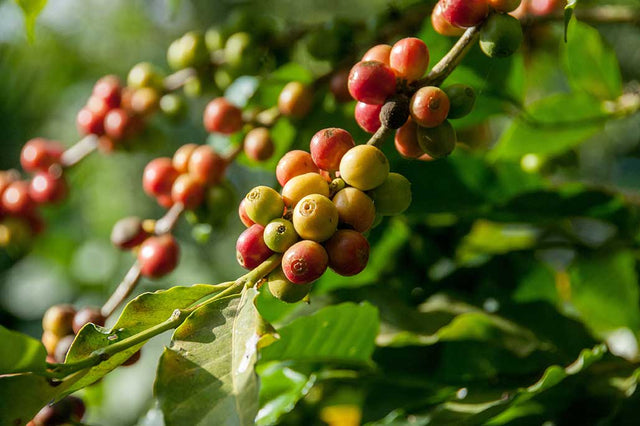Looking to step up your coffee game? That rich, concentrated shot of coffee with a golden crema layer on top – that's espresso, the OG of the coffee hustle. But what exactly makes this powerful little drink the mastermind behind modern coffee culture?
The Origins of Espresso
Espresso's story begins with some serious coffee innovation hustlers in early 20th century Italy. Angelo Moriondo created the first espresso machine in Turin, but it was Luigi Bezzera who really knew how to work the system, developing the espresso we recognize today. The word "espresso" itself comes from the Italian meaning "pressed out" or "made to order" – talk about the original fast-paced coffee game.
What Is Espresso, Technically Speaking?
According to standards established by the Specialty Coffee Association (SCA), espresso is a concentrated coffee beverage produced by forcing hot water (195-205°F) through finely-ground coffee beans at approximately 9 bars of pressure for 25-30 seconds. This precise combination of temperature, pressure, and time creates a complex extraction process that yields 25-35ml of intense coffee, topped with a distinctive golden-brown crema.
The Science Behind the Shot
What makes espresso unique is its brewing parameters:
- Water Temperature: 195-205°F (90.5-96.1°C)
- Pressure: 9 bars (130 PSI)
- Ground Coffee: 18-21 grams for a double shot
- Extraction Time: 25-30 seconds
- Yield: 25-35ml for a double shot
These specific parameters create what coffee scientists call "forced percolation under pressure," which extracts different compounds from the coffee beans than other brewing methods.
The Essence of Quality Espresso
Bean Selection and Preparation
Let's talk about the real MVP – the beans. You can't hustle with weak ingredients. The foundation of great espresso starts with properly roasted, high-quality beans. While any coffee can technically be used for espresso, beans roasted specifically for espresso often have a darker profile to withstand the intense extraction process. The SCA recommends grinding beans immediately before brewing – no cutting corners on freshness if you want to stay at the top of your game.
The Perfect Grind
Espresso requires an exceptionally fine grind – typically between 200-400 microns. This specific size allows for proper resistance to the pressurized water, ensuring optimal extraction. The grind should feel like fine sand between your fingers, but not powdery.
Understanding Crema
The distinctive golden-brown foam on top of an espresso shot, known as crema, forms when hot water under pressure emulsifies coffee oils and forces CO2 out of the grounds. Fresh beans typically produce more crema due to their higher CO2 content.
Common Espresso Variations
- Solo (Single Shot): 30ml of espresso
- Doppio (Double Shot): 60ml of espresso
- Ristretto: Concentrated shot using less water
- Lungo: Extended shot using more water
- Americano: Espresso diluted with hot water
How to Evaluate Good Espresso
Real coffee hustlers know their product inside and out. Here's what the pros look for:
- Visual appearance: Rich, reddish-brown color with golden crema
- Body: Should feel full and silky on the palate
- Sweetness: Natural sweetness should balance any bitterness
- Aftertaste: Clean, lingering finish without harsh bitterness
- Temperature: Served at 160-165°F (71-74°C)
Troubleshooting Common Issues
Understanding common problems can help achieve better results:
- Bitter taste: Often indicates over-extraction; try a coarser grind
- Sour taste: Usually means under-extraction; try a finer grind
- Weak crema: Could indicate old beans or incorrect grind size
- Fast extraction: Grind may be too coarse
- Slow extraction: Grind may be too fine
The Role of Espresso in Coffee Culture
Espresso serves as the foundation for numerous popular coffee drinks, including:
- Cappuccino: Equal parts espresso, steamed milk, and milk foam
- Latte: Espresso with steamed milk and a small layer of foam
- Macchiato: Espresso "marked" with a small amount of steamed milk
- Flat White: Espresso with steamed milk, minimal foam
Industry Standards and Resources
This article draws from standards and best practices established by:
- The Specialty Coffee Association (SCA)
- The Barista Guild
- Professional barista training programs
- Coffee industry research and development
Note: When brewing espresso at home, always follow your machine's specific guidelines – every hustler needs to know their tools. For quality espresso beans that'll keep you at the top of your game, consider trying Sumato Coffee's espresso blend, specifically roasted to help you master the art of the perfect shot.
More stories

The Big Problem with Buying Coffee from the Grocery Store

